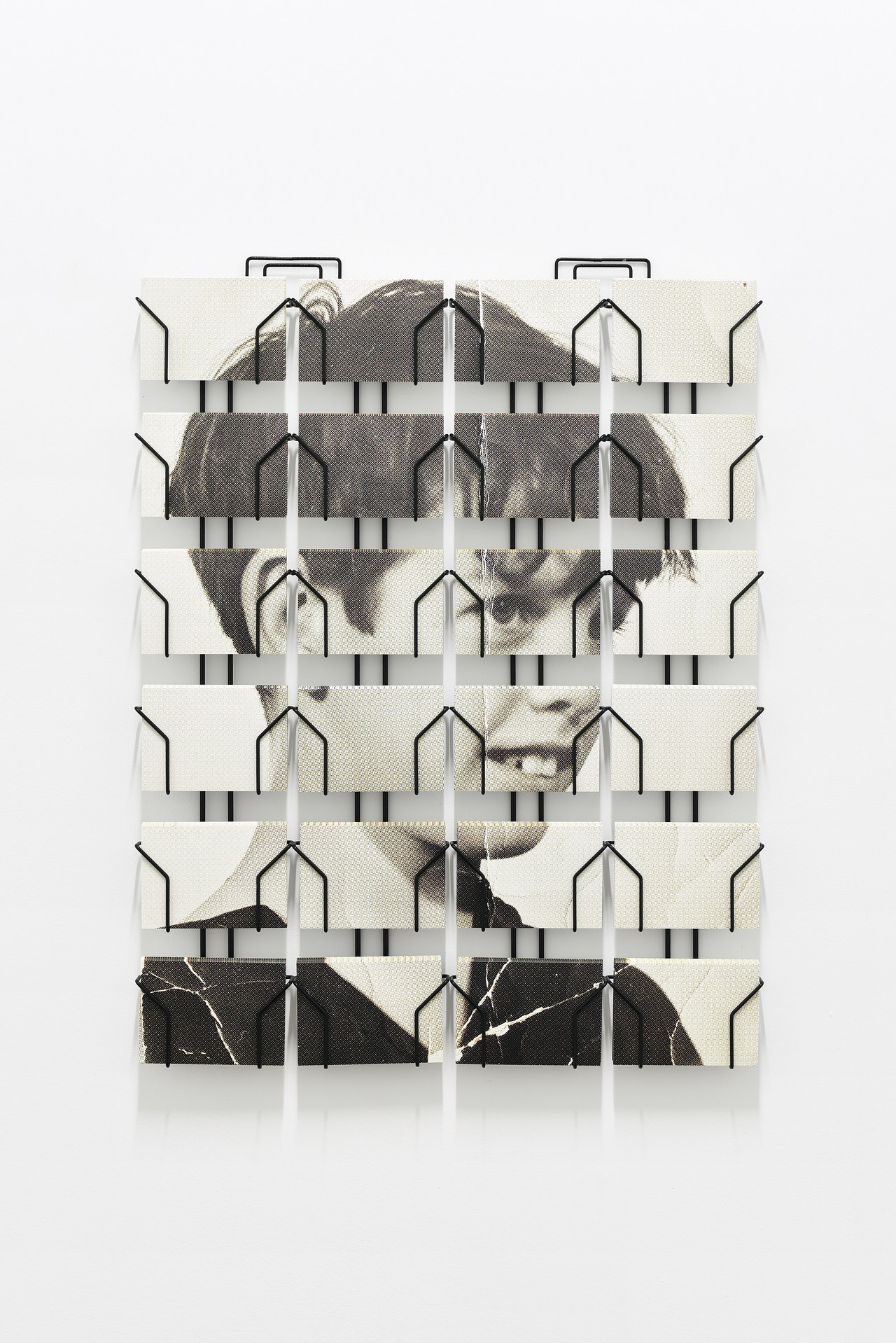Espadrilles
2019 - Painting (Painting)
30 x 40 cm
Rosalind Nashashibi
Rosalind Nashashibi’s paintings incorporate motifs drawn from her day-to-day environment, often reworked with multiple variations. The development of colour palettes in her painting work could be compared to the work in her films where she delicately draws an internal visual language which provides the viewer equal space to her protagonists. Possible readings of her work are left deliberately open, encouraging thought in terms of association rather than the imposition of a narrative structure. This painting was first presented as part of an exhibition entitled ‘Future Sun’ at SMAK in Ghent with the artist’s long term collaborator Lucy Skaer, which took Ursula K Le Guin’s 1990 The Shoobie’s Story as its main inspiration, instigating an investigation into non-linear time. In the work, the body is alluded to, however it remains difficult to imagine its position within a space.
Rosalind Nashashibi is a filmmaker and artist based in London. Her practice includes painting, engraving and photography. Best known for her film work, she has more recently begun to focus on her painting practice once again. Drawing on a male-dominated history of painting, she confronts such work head on, most explicitly maybe with her portrait of the painter Gaugin following the 2017 film Why Are You Angry? made in collaboration with artist Lucy Skaer. The film reclaims the exoticized depictions of women painted by the artist and challenges the colonial and gendered violence that pervade in such work. Where her paintings are both abstract and figurative, imbued with bright colors and vague forms, her films focus on the minute details of the lives of her subjects in their respective environments—from exiled mother daughter artists in Guatemala to friends and family in Gaza—in order to describe and explore different kinds of relationships. Her films present non-linear narrations, punctuated by scenes that reveal the power relations and intimacy between people, all while continually linking individual and collective histories.
Colors:
Other related works, blended automatically

© » KADIST
Keith Tyson
The work of Keith Tyson is concerned with an interest in generative systems, and embraces the complexity and interconnectedness of existence...

© » KADIST
Ryan Gander
2012Epiphany…learnt through hardship is composed of a bronze sculpture depicting the model of the little dancer of Degas, in the pose of a female nude photographed by Edward Weston (Nude, 1936) accompanied by a blue cube...

© » KADIST
Tacita Dean
2001The photographic quality of the film Baobab is not only the result of a highly sophisticated use of black and white and light, but also of the way in which each tree is characterized as an individual, creating in the end a series of portraits...

© » KADIST
Andrew Grassie
2009In 2008, Grassie was invited by the Whitechapel Gallery to document the transformation of some of its spaces...

© » KADIST
Mark Leckey
2004In Made In Heaven , we are face to face with a sculptural apparition, a divine visitation in the artist’s studio...

© » KADIST
Jeremy Deller
2012Beyond the White Walls , with a commentary written and spoken by Jeremy Deller, is often wryly amusing...

© » KADIST
Simon Fujiwara
2016Masks is a series of abstract paintings by Simon Fujiwara that together form a giant, fragmented portrait of German Chancellor Angela Merkel’s face...

© » KADIST
Ian Breakwell
2008“BC/AD” (Before Cancer, After Diagnoses) is a video of photographs of the artist’s face dating from early childhood to the month before he died, accompanied by the last diary entries he wrote from April 2004 to July 2005 (entitled “50 Reasons for Getting Out of Bed”), from the period from when he lost his voice, thinking he had laryngitis, through the moment he was diagnosed with lung cancer and the subsequent treatment that was ultimately, ineffective...

© » KADIST
Toby Ziegler
2005The Fifth Quarter might have taken its mysterious inspiration from the eponymous Stephen King story collated into the Nightmares & Dreamscapes collection...

© » KADIST
Chris Wiley
2012Architectural details become abstracted renderings in Chris Wiley’s inkjet prints 11 and 20 (both 2012)...

© » KADIST
Charles Avery
2012Since 2005, Charles Avery has devoted his practice to the perpetual description of a fictional island...

© » KADIST
Anthony McCall
1974This score is a graphic record of the detailed choreography of one of Anthony McCall’s Landscape for Fire performances...








